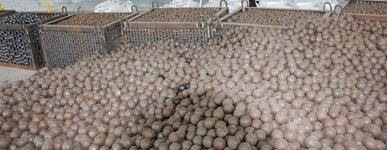California Girl
Jr. Member
- Dec 19, 2011
- 91
- 3
- Detector(s) used
- Tesoro Lobo, White's Mxt Pro & GMT, Gold Master ll.
- Primary Interest:
- All Treasure Hunting
No Way. Those are the coolest finds yet. Besides the rest of the relics out there. Those cannon balls are awesome. Congrats. 




















 ).
).  Fact is, I've personally dug and found (eyeballed once) a few authentic cannonballs myself from sites on the East Coast, that date from pre-Revolutionary War, on up through the Civil War. Not to mention digging a good number of Spanish and Colonial artifacts.
Fact is, I've personally dug and found (eyeballed once) a few authentic cannonballs myself from sites on the East Coast, that date from pre-Revolutionary War, on up through the Civil War. Not to mention digging a good number of Spanish and Colonial artifacts. 






